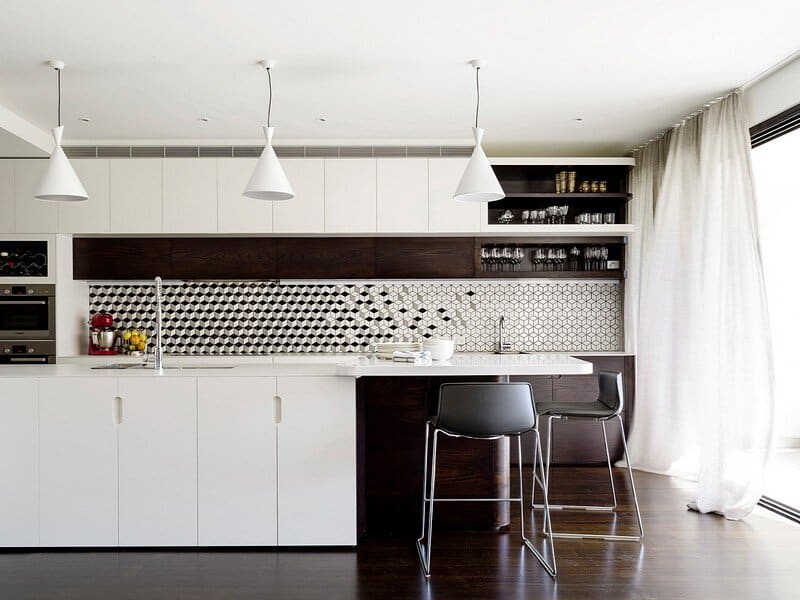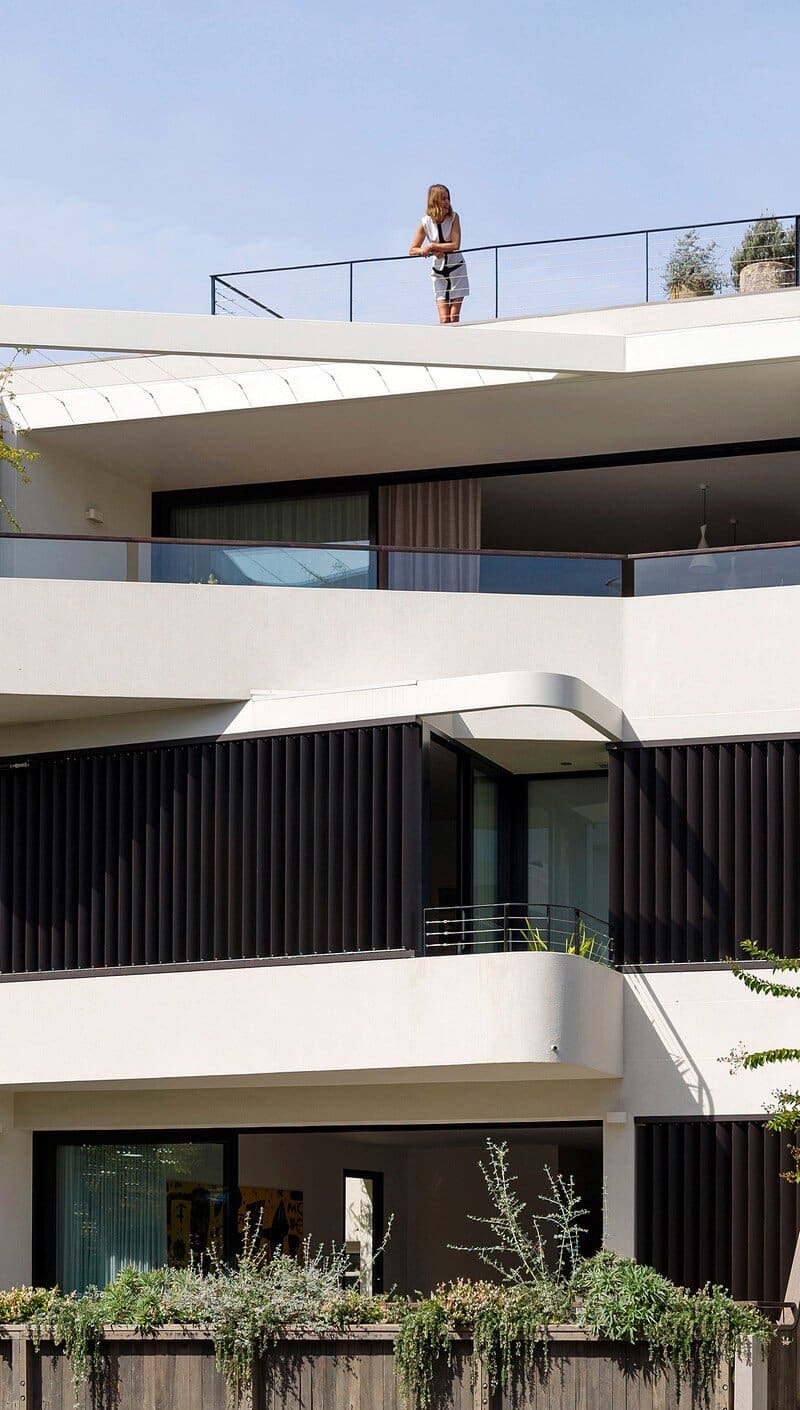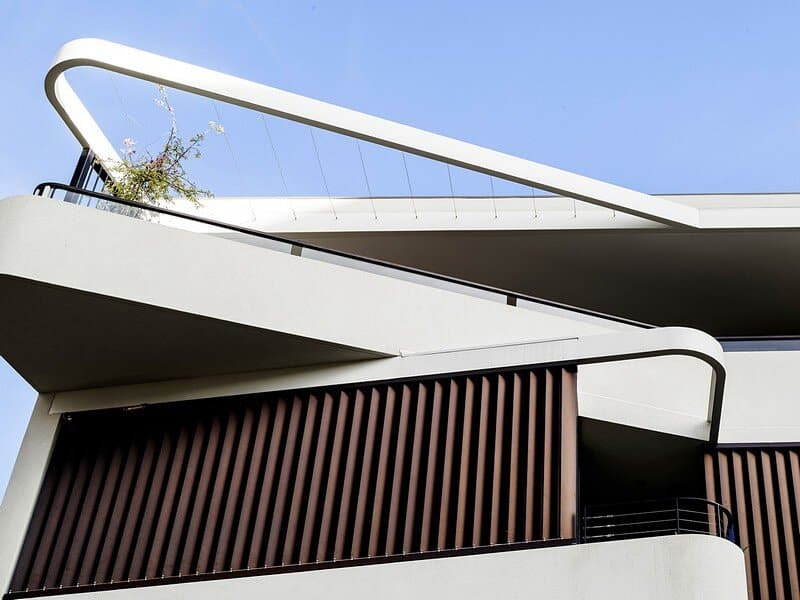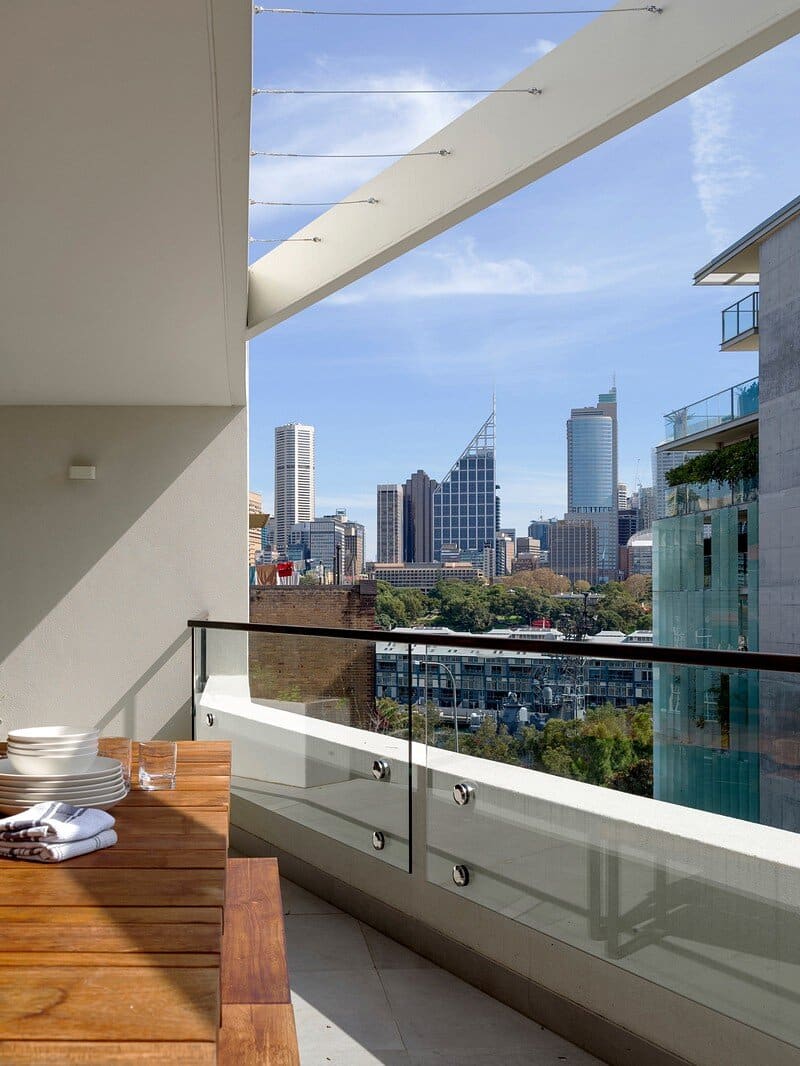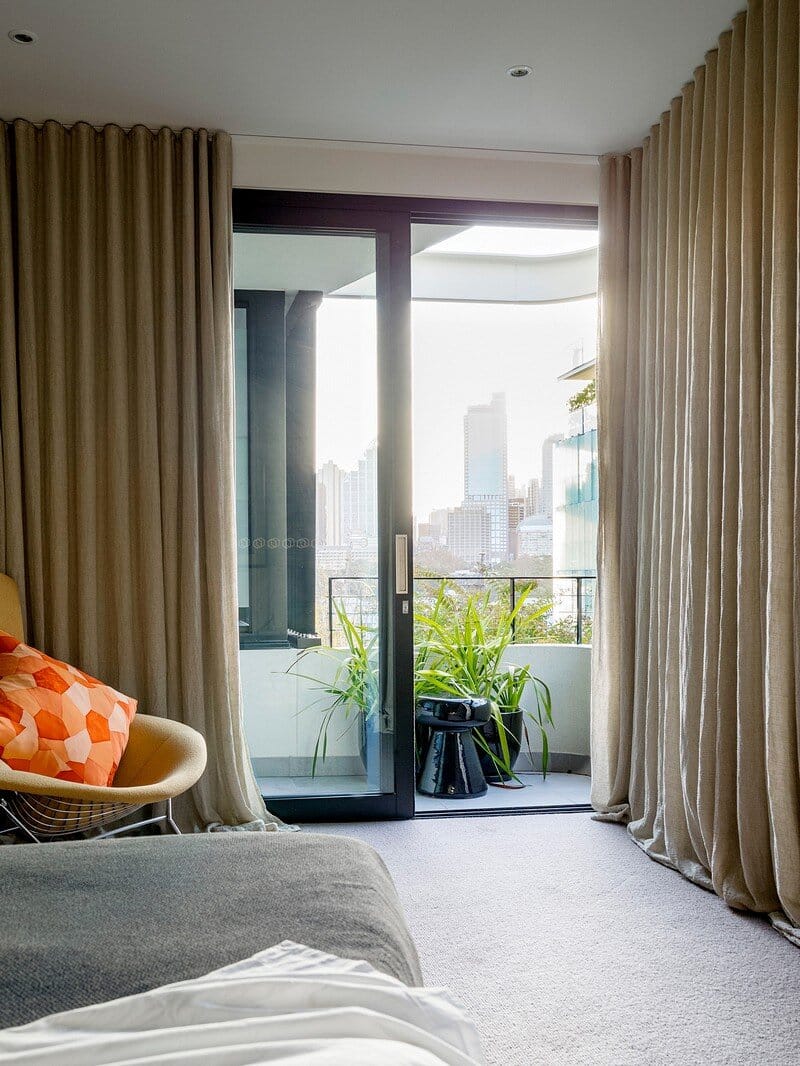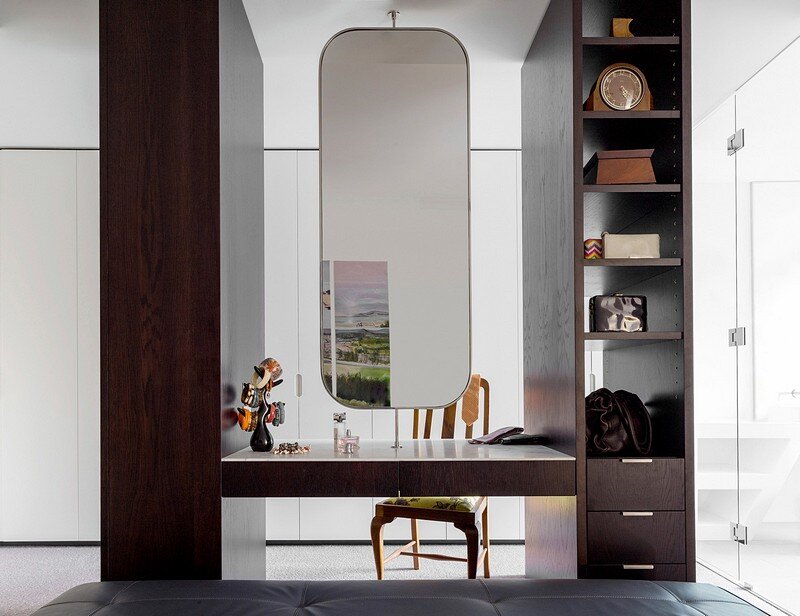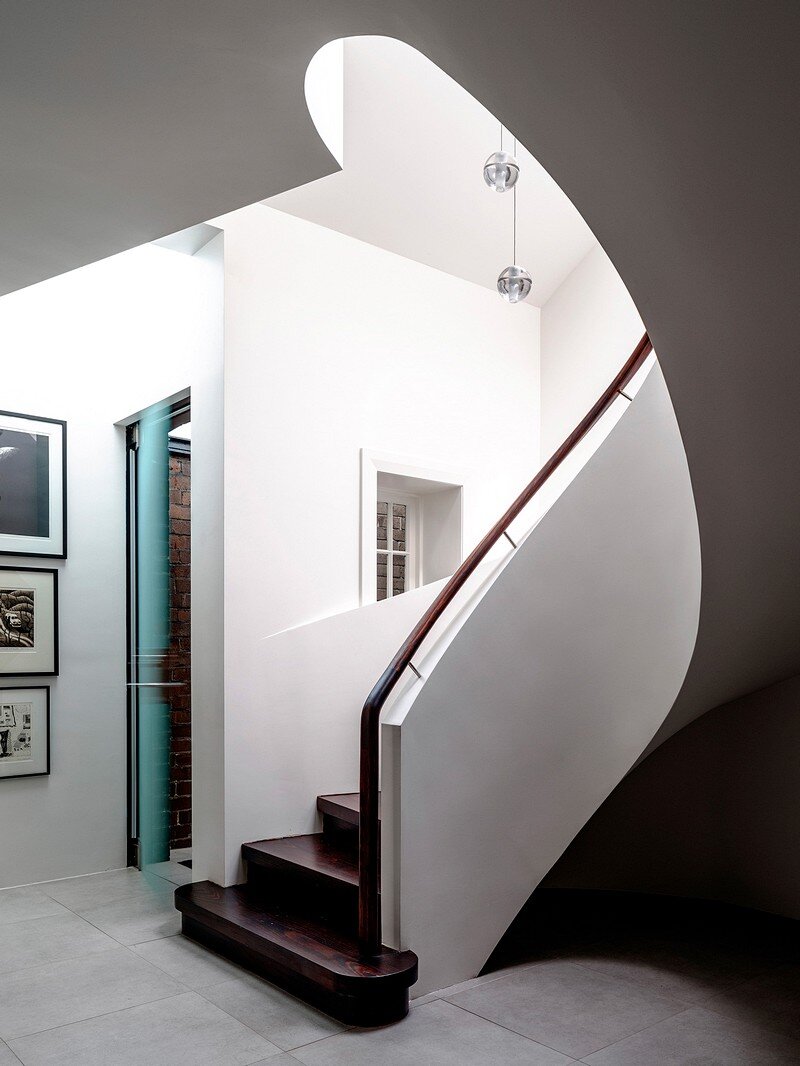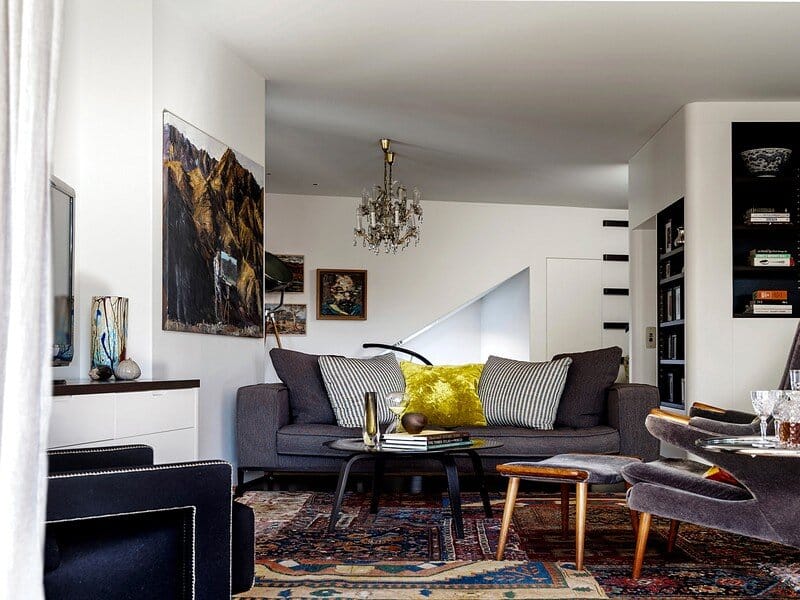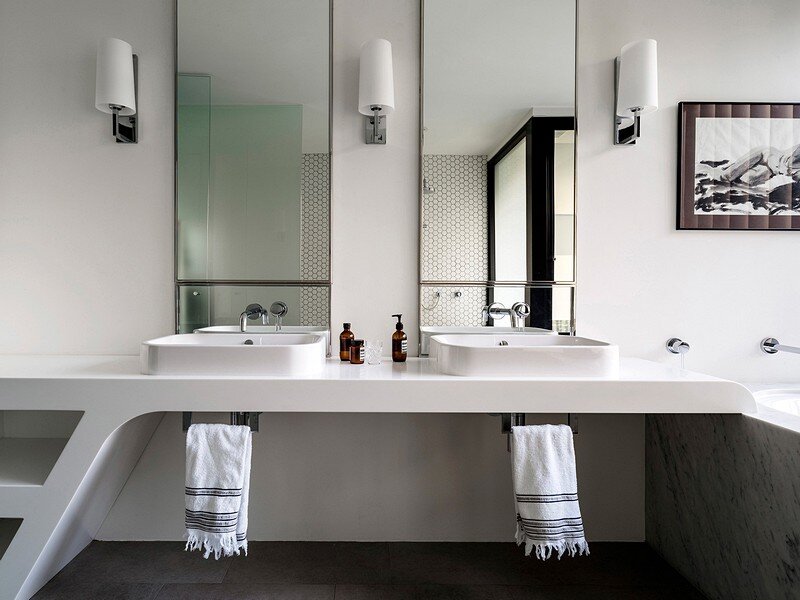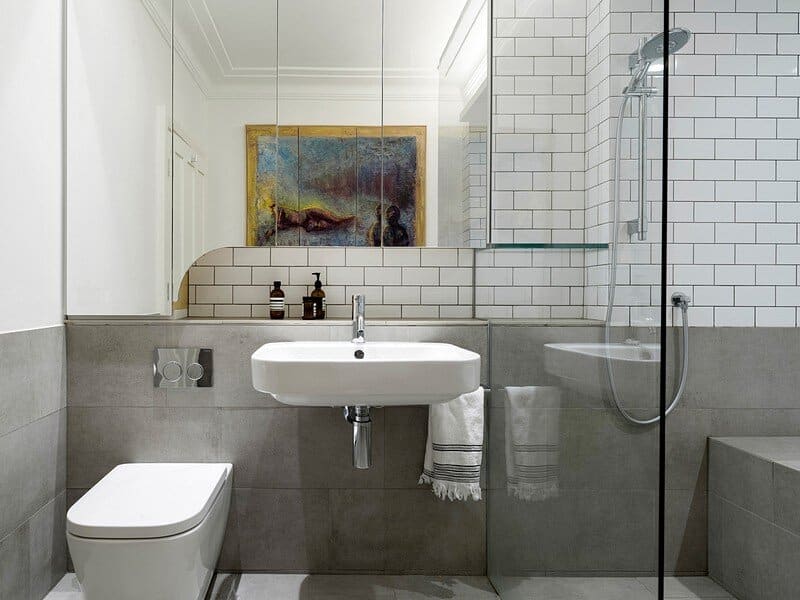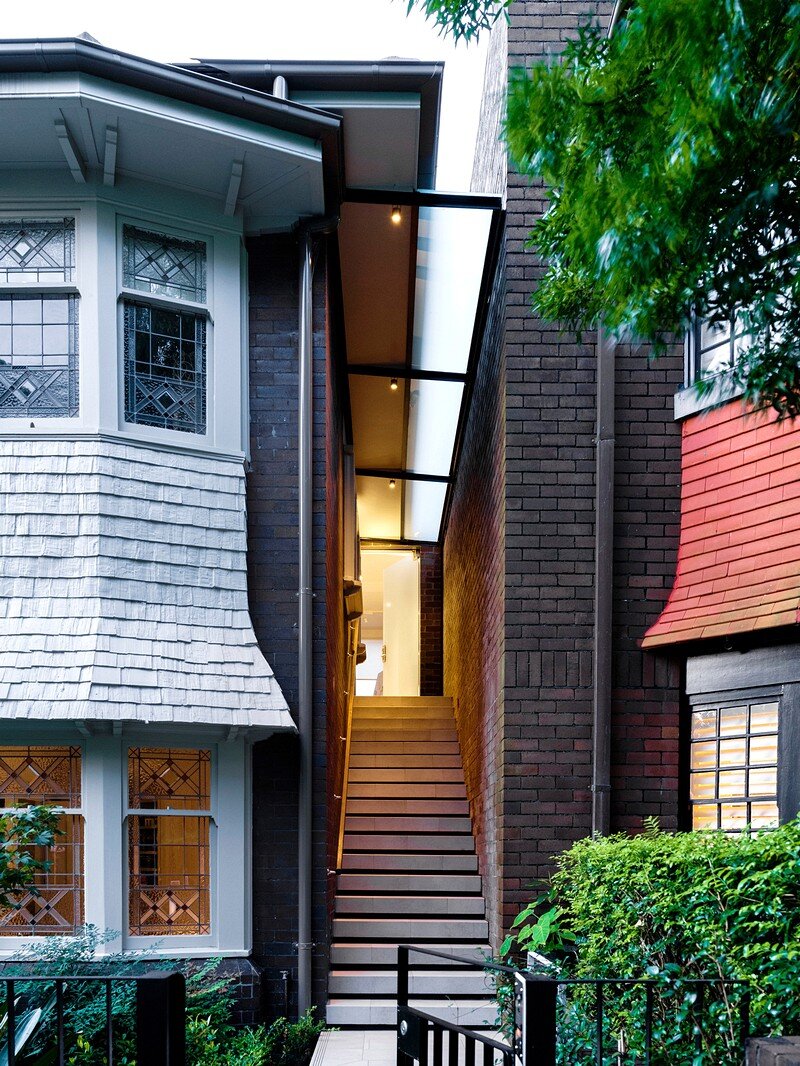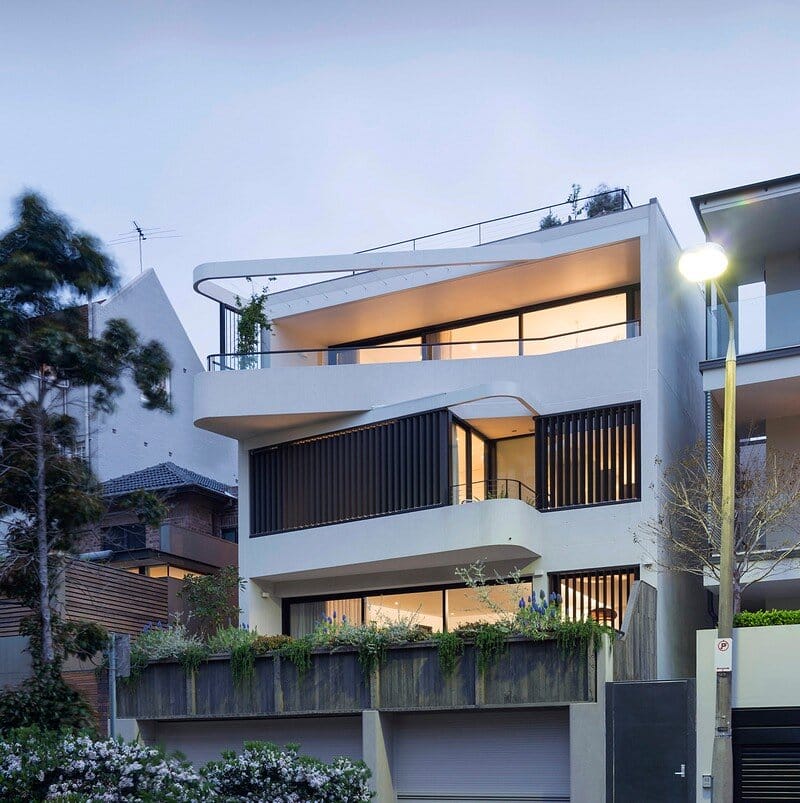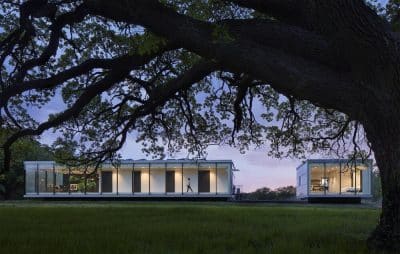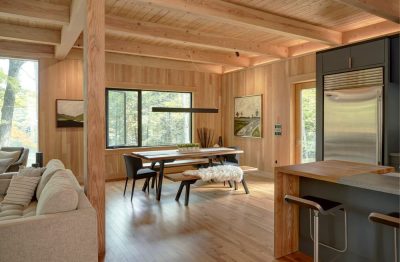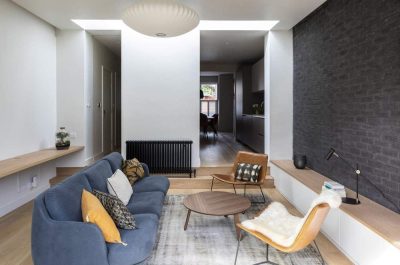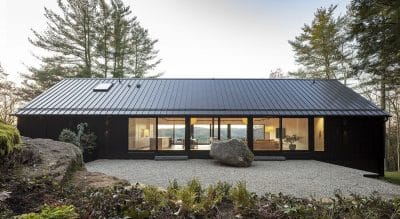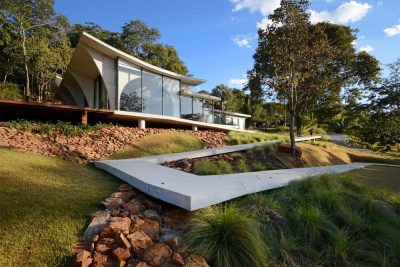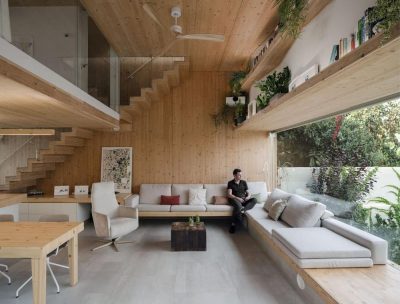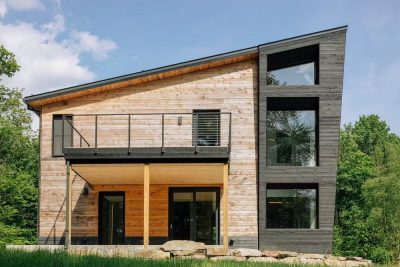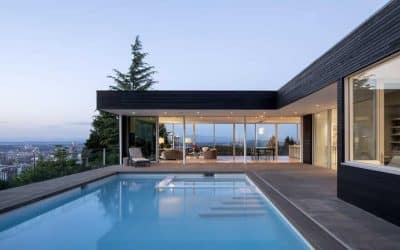Project: Duplex in The City
Architects: Luigi Roselli Architects
Location: Potts Point, Sydney, NSW
Design Architect: Luigi Rosselli, Jane McNeill, Hugh Campbell
Interior Design: Jane McNeill
Heritage Consultant: John Oultram Heritage & Design
Builder: BWO Constructions Pty Ltd
Structural and Hydraulic Consultant: Rooney & Bye Pty Ltd
Joiner: Space Joinery
Landscaper: Susan Miles Landscape Architect
Photography: Justin Alexander / Edward Birch
Equivalent to the brownstones of New York, this interwar “Duplex in The City” is a humane scale solution to housing in the Sydney city fringes. Shoulder to shoulder with other apartment buildings, the original 1920s two-storey flats were transformed into a four storey block with a basement carpark and cellar, a ground floor garden apartment and a two-storey penthouse.
Just forty-percent of the existing structure was demolished, mainly the dysfunctional rooms at the back of the property, which were replaced by a modern four-storey structure. The front of the property, with its original Queen Anne leadlight windows, liver toned brickwork and timber shingles, was left intact to preserve the building’s consistency with the prevailing style of the street. No one would believe that behind those refined front rooms the apartments would morph into modern open living spaces with generous terraces that allow the inhabitants to admire the views of the city, populated with skyscrapers designed by Renzo Piano, Sir Norman Foster and Ingenhoven Architects, and enjoy glimpses of Sydney Harbour beyond.
The duality of the design also reflects the personalities of the residents: urbane and loaded with old world culture and family history, yet passionate about modern art, architecture and urban living. Here the interior architecture plays greater role than in a more spacious suburban setting.
The use of every millimetre has been carefully planned to condense the content of a large house into this city pad, with an eclectic collection of furniture and art; the skilful joinery design by Project Architect, Jane McNeill aimed to provide as much storage as possible for the owners, while lending elegance to the interiors in touches such as the dressing table in the dressing room.
The cultured owners could not part with their books, so Jane created for them a library and study area with room for a comfortable arm chair, tucked beside the Jacobs Ladder stair that climbs to a glazed roof hatch and a landscaped roof terrace and a spa pool with a city skyline backdrop.
Sir Norman Foster’s unfinished tower, the Art Gallery of New South Wales awaiting their SAANA Architects additions, Woolloomooloo Wharf with the W Hotel, are part of the City views enjoyed by these Duplex apartments.
All floors have a view. The main bedroom bed could be linked to the city office with a flying fox. Classic Diamond Chair by Harry Bertoia. Curtains by the Curtain & Blind Factory
“Mirror mirror… who in this realm is the fairest of them all?” Jane McNeill’s masterful joinery is hard to beat with its dark American oak timber veneers, carara marble benchtop, polished chrome framed mirror, ottoman by Eileen Grey and frosted glass wall between the dressing room and ensuite bathroom to provide defused natural light for this otherwise landlocked space.
The internal stair of the penthouse needs to compete with a lift, and so provides and pleasurable and senusual ascension to the upper living spaces. Placed between the old and new parts of the building it forms a vertical and horizontal connection.
Spiral staircases have a unique characteristic in creating a rigid and self-supporting form that requires no beams or columns. In this case the spiral plywood balustrade is a strong shape that will not distort.
The best aspect of this stair is how the balustrade is overlaid with the original mid 1920s window, retaining its outlook and light.
Bookcases and a television blend in amongst the owner’s collected art, including paintings by Euan McLeod and Sali Herman, and their design classic furniture pieces including a Hans J Wegner ‘Papa Bear’ wingback chair and ottoman. (right). To the rear of the image the lift door can be seen, integrated into a bookshelf.
A small library where one can read and contemplate the sky through a porthole window or glazed roofhatch. The stair, built on top of the kitchen pantry leads up to the roofhatch.
The monochrome kitchen opens out onto a terrace. Joinery by Space Joinery, Lighting by Tangent Light , splashback design by Jane McNeill, Tiles by Bisanna Tiles
Also with city views, the master ensuite bathroom features a graphicly angular corian benchtop, Lea Ceramica tiled floor carara marble bath surround and pure untiled walls. The morning ablutions are performed in a “cabinet d’ etude”, a study like space.
The main bathroom is located in the 1920s part of the apartment and so features metro style ceramic tiles with the exceedingly tight grout joints characteristic of the period.
The original frontage of the duplex apartments, with their shingle skirted bow windows and a new entry stair, wedged between dark liver pressed bricks.
The scissor balconies of the back elevation are angled to offer side views while maintaining the building’s rear alignment with the neighbouring properties. The Council thought but resisted the temptation to emacipate the elevation by cutting it back to a flat façade. Sydney City Council is a design intelligent council, a rare thing in that level of authority.
